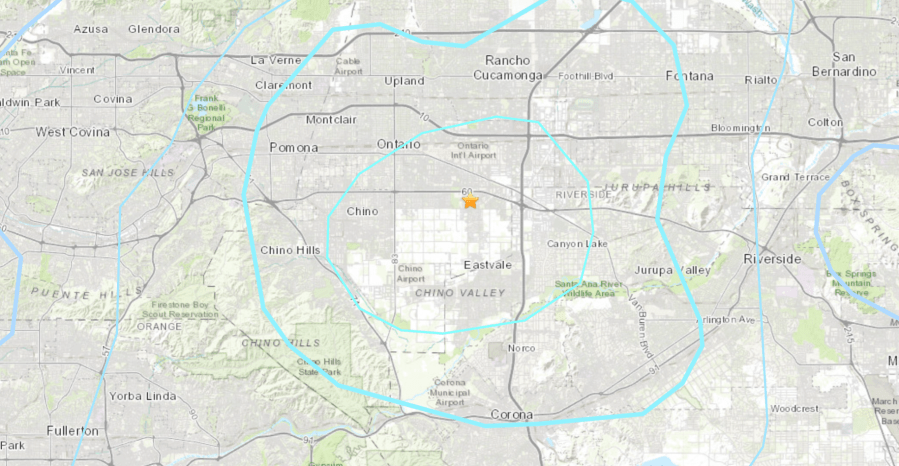An earthquake with a magnitude of 4.0 rattled Southern California’s Inland Empire early Sunday morning, shaking homes and businesses and waking residents across the region.
According to the U.S. Geological Survey, the quake struck at 3:41 a.m. in Ontario. The epicenter was just south of Highway 60 near the Ontario International Airport, at a depth of three miles.
There were no reports of significant damage or injuries.
The quake was initially recorded as magnitude 4.3 but quickly downgraded to 4.0. According to the Geological Survey, it was followed by several small aftershocks, the strongest of which was 2.5.
“I’m in Eastvale and surprised it was only 4.1! It shook my house violently! It felt like a car had hit the side of my house,” one KTLA 5 News viewer posted on X, formerly Twitter.
“In Fontana and felt it. Shook my door and thought someone was knocking on it till the entire house shook,” another wrote.
A USGS impact map shows the relatively shallow temblor could be felt in many areas of Riverside, San Bernardino, Los Angeles, and Orange counties, and perhaps as far south as northern San Diego County.
Latest California Earthquakes. Please wait a moment for map to load.
Use controls or your thumb to move and zoom.
Thousands of earthquakes are recorded in California annually, but the vast majority are incredibly minor. Several hundred reach a magnitude of 3.0, and only about 15 to 20 reach a magnitude of 4.0 or greater, according to the USGS.
In North America, only Alaska records more quakes per year than California.
What to do in an earthquake
During an earthquake, it’s crucial to know the proper steps to protect yourself and minimize injury. The California Department of Public Health (CDPH) provides detailed guidelines on what to do during such events. Here are the key points:
Drop, Cover, and Hold On:
Drop: Immediately drop down onto your hands and knees. This position prevents you from being knocked over and allows you to stay low and crawl to safety if necessary.
Cover: Use one arm to protect your head and neck, and if possible, take shelter under a sturdy table or desk. If no shelter is available, get down next to an interior wall away from windows. Stay on your knees and bend over to protect vital organs.
Hold On: Hold on to your shelter until the shaking stops. Be prepared to move with your shelter if it shifts.
